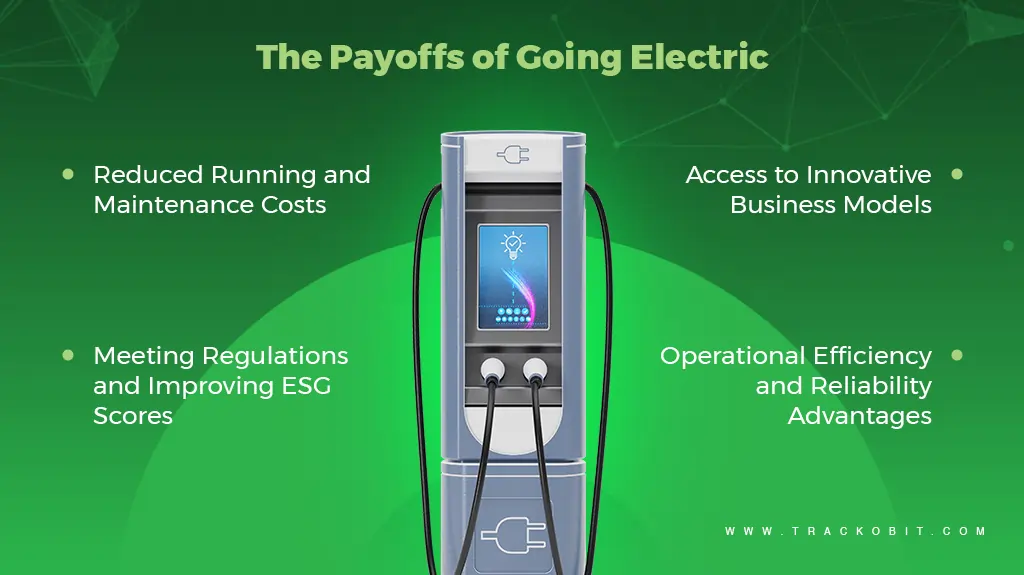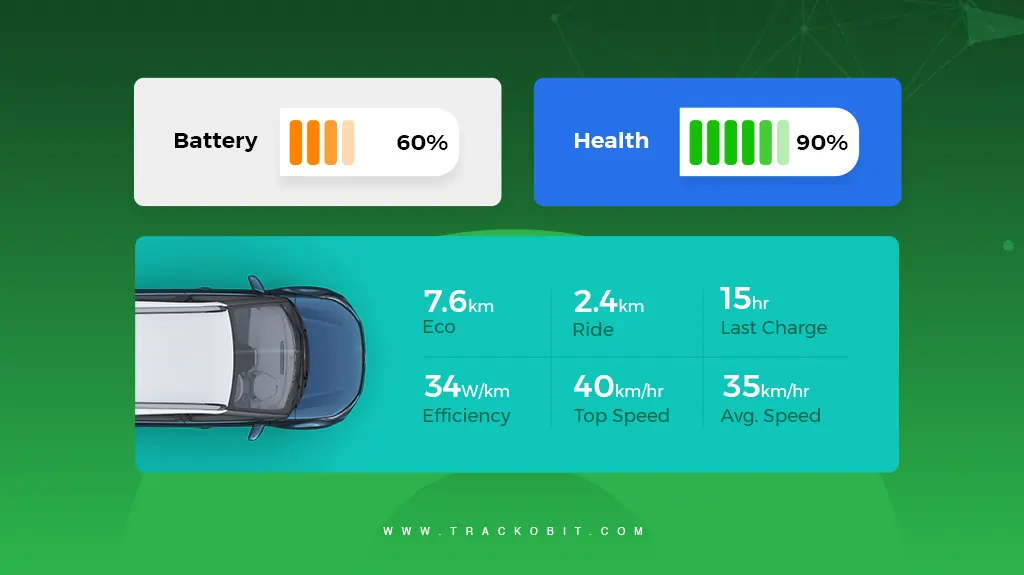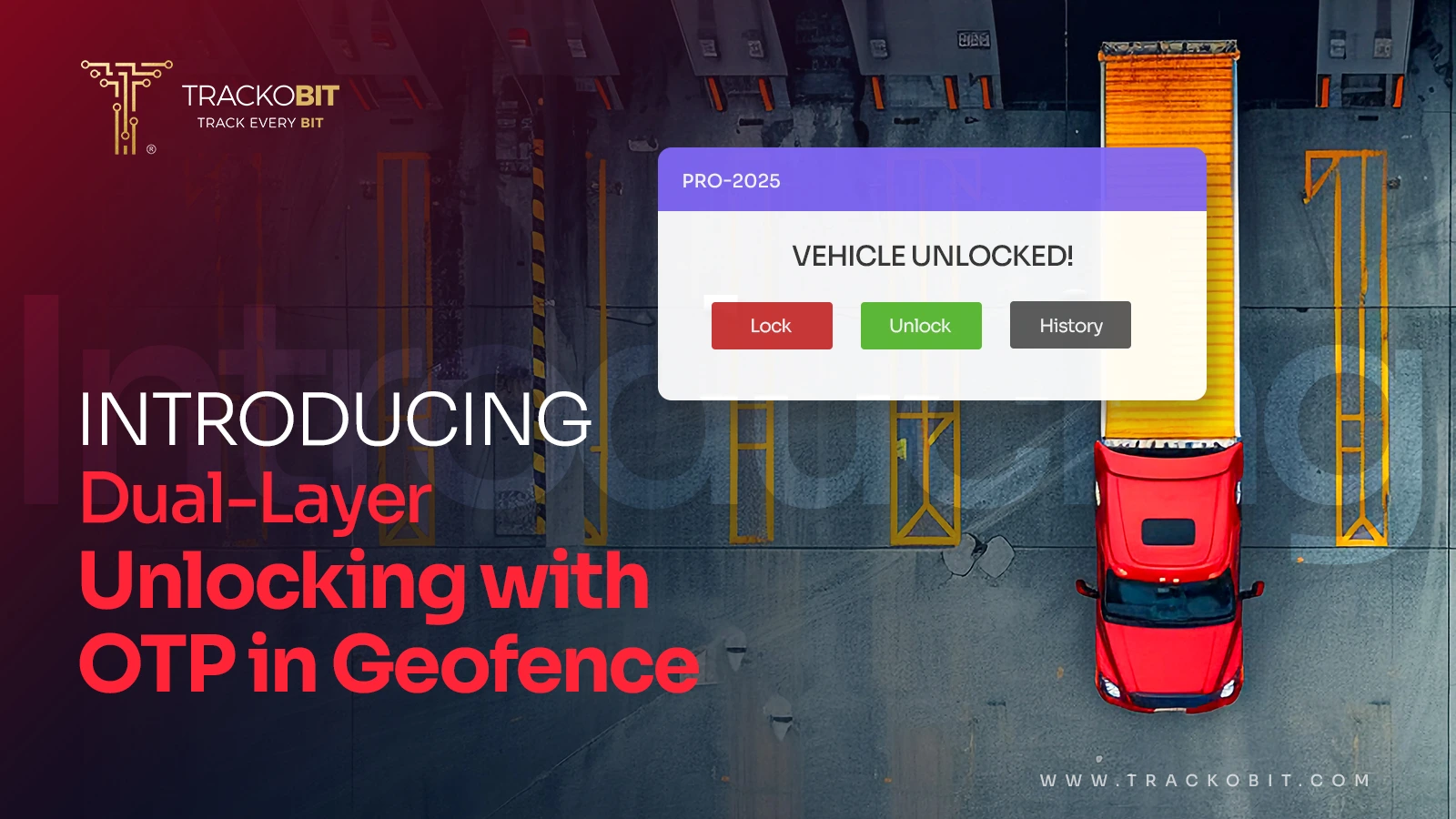-
TrackoBit
Manage commercial vehicles with the new-age Fleet Management Software
TrackoBit -
TrackoField
Streamline your scattered workforce with Field Force Management Software
TrackoField -
Features Resources
-
Blog
Carefully curated articles to update you on industrial trends. -
White Paper
Insightful papers and analysis on essential subject matters. -
Glossary
Explore an alphabetical list of relevant industry terms. -
What’s New
Get TrackoBit & TrackoField monthly updates here. -
Case Study
Explore the cases we solved with our diverse solutions. -
Infographics
Explore key topics through visually impactful infographics.
-
About Us
Get to know TrackoBit: our team, ethos, values, and vision. -
Careers
Join the most dynamic cult of coders, creatives and changemakers. -
Tech Support
Learn about our technical support team and services in detail. -
Events
Check out the exhibitions where we left our marks and conquered. -
Contact Us
Connect with us and let us know how we can be of service.
The Rise of Electric Fleets: Challenges and Opportunities for Businesses
- Author:Tithi Agarwal
- Read Time:5 min
- Published:
- Last Update: November 12, 2025
Table of Contents
Toggle
The global fleet landscape is poised for a decade-long transformation. This change is being powered by electricity. Logistics-led businesses are embracing electric vehicles (EV).
Table of Contents
Toggle
Logistics, last-mile, ride hailing, and leasing companies are integrating electric fleet. This is because they have realized that EVs are revolutionizing the future of transportation.
This shift is driven by more than mere environmental concerns. Electric vehicles help attract investors and customers who value climate-conscious businesses. Green fleets enhance brand reputation too and help stand out in the crowd of competitors. Lastly, rising fuel costs are squeezing profit margins. Stable energy prices and sustainability goals are now shaping boardroom decisions.
Government policies are accelerating this transformation across India. They are doing it with state EV mandates and zero-emission targets EV adoption. They’ve become a competitive necessity rather than a future goal.
The Hidden Challenges of Electrifying Fleets
Switching to electric fleets sounds simple on paper, but it’s far from plug-and-play. But there are some EV charging challenges that trouble fleet managers. EVs operate under very different constraints than traditional CE vehicles. Business often undermines this shift.
EV range often becomes unpredictable because of –
- Changing with load,
- Change in terrain,
- Change in weather.
Limited charging infrastructure leads to downtime, queuing, and scheduling conflicts. Battery health requires close monitoring to prevent degradation, deep discharges, and costly replacements.
High upfront costs add pressure to prove ROI quickly. Most legacy fleet systems lack visibility into EV data. This includes charging time, downtime, and energy usage. This leaves decision-makers guessing about efficiency and performance.
Opportunities That Make the EV Shift Worth It
Adopting EV is truly revolutionizing the future of transportation. You will be shocked to learn that by the end of 2024, the global electric fleet had almost 58 million cars. Here are some reasons proving that shifting to EV fleet is worth it.
1. Lower Running Costs: Electric vehicles dramatically reduce operating expenses. They have fewer moving parts. This means they require less maintenance and consume far cheaper energy per kilometer compared to diesel fleets. As fuel prices continue to rise, this cost gap will only widen, giving EV fleets a clear long-term profitability edge.
2. Regulatory and ESG Benefits: EV adoption aligns directly with tightening environmental regulations. It helps businesses meet government green mandates and qualify for carbon credits. Just as importantly, it strengthens ESG scores — something investors, partners, and customers now weigh heavily when choosing who to work with or fund.
3. New Business Models: Going electric unlocks entirely new revenue opportunities. Companies are experimenting with EV-as-a-Service models, battery leasing options, and carbon-neutral logistics offerings. These innovative business models are creating fresh income streams while positioning companies as sustainability leaders in their industries.
4. Operational Edge: EVs give businesses an operational advantage. Their quieter engines allow night-time deliveries in noise-sensitive zones. Also lower breakdown rates mean less downtime. This enables longer service hours, higher route coverage, and more predictable delivery schedules. This is especially crucial in high-volume logistics environments.

Benefits of Integrating Electric Vehicles in your Fleet
How Intelligence Transforms EV Fleet Operations
Adopting EVs is just the first step. The real challenge is running them efficiently, reliably, and profitably, which demands intelligence. Unlike ICE fleets, EVs come with new unknowns. This could be fluctuating range, charging logistics, battery wear, and unfamiliar cost patterns.
Here’s how a smart fleet management platform like TrackoBit transforms this complexity into clarity:
1. Real-Range Visibility and Trip Feasibility
EV range isn’t fixed. It changes with payload, terrain, weather, and even driving behavior. Without accurate data, dispatchers either underutilize vehicles or risk mid-route breakdowns.
TrackoBit gives live insights into each vehicle’s –
- Remaining range,
- SOC (state of charge),
- Energy consumption trends.
This is helping managers assign only feasible trips. This prevents range anxiety and reduces trip failures. This ensures vehicles are used to their full potential.
2. Smart Energy Analytics
EVs don’t consume fuel; they consume energy. Businesses need to know how much energy is being used per kilometer and where wastage occurs.
TrackoBit’s EV reports track –
- KWh consumed per 100 km,
- Charging sessions,
- Idle plug-in time,
- Downtime costs.
These insights help fleets plan energy use and compare EV efficiency. Also this data is beneficial to reduce idle or parked charging waste.
3. Battery Health Intelligence
Battery packs are the costliest component of an EV. Their performance quietly erodes over time. If unnoticed, this leads to reduced range, unexpected breakdowns, and expensive replacements.
TrackoBit continuously monitors battery health, temperature patterns, charge/discharge cycles, and voltage irregularities. Predictive alerts notify managers about deep discharges, overheating, or overvoltage risks. Managers can intervene early and extend battery life.

TrackoBit’s Electric Fleet Management Software Makes EV Adoption Seamless
4. Charging Behavior Monitoring
Charging downtime directly affects fleet productivity. Unplanned charging stops, peak-tariff charging, or idle time at stations all add hidden costs.
EV Fleet management software takles key barriers by creating logs of every charging session. You get data like –
- Start/end times,
- Duration,
- Energy drawn,
- Location.
This will help managers optimize schedules and avoid peak hours. With the software they can plan operations around reliable charge cycles. This ensures vehicles spend more time on the road and less time plugged in.
5. Mixed Fleet Management
Most companies don’t go 100% electric overnight. They run mixed fleets with both ICE and EV vehicles. This complicates visibility and decision-making.
TrackoBit brings both under one system. Letting managers –
- Compare fuel consumption
- Energy usage,
- Monitor costs,
- Track utilization.
This clarity helps decide where EVs are performing better. You will know where ICE vehicles are still essential.
Final Thoughts: The Race Is On
The shift to electric fleets is no longer a distant vision; it’s unfolding now. Delaying adoption means falling behind greener competitors, gaining cost and brand advantages.
However, winning with EV fleets requires more than just purchasing electric vehicles. It demands data, precision, and control to make every kilometer count.
With TrackoBit’s electric vehicle fleet management software, get real-time intelligence. Managers need this to run EV fleets with ease. They do it by tracking energy use, battery health, downtime, and costs with clarity. The future of fleets is electric. The winners will be the ones who manage it smartly with TrackoBit.
Tithi Agarwal is an established content marketing specialist with years of experience in Telematics and the SaaS domain. With a strong background in literature and industrial expertise in technical wr... Read More
Related Blogs
-

How to Use Driver Behavior Reports as a Sales Hook to Close Big Fleets
Tithi Agarwal October 16, 2025TrackoBit’s driver behavior reports empower fleet providers to win big contracts by showcasing safety, efficiency, and measurable ROI.
-

TrackoBit’s Unlocking in Geofence with OTP: Elevating Cargo Protection
Tithi Agarwal September 16, 2025TrackoBit’s latest feature – Unlocking in Geofence with OTP lets you lock out theft and unlock cargo only at the…
-

Who’s Really Behind the Wheel? Unlocking Insights with Driver Performance Reports
Tithi Agarwal August 27, 2025Identify top-performing drivers, monitor violations, and grade skills with the driver performance report. This makes fleet operations more transparent and…
-

How GPS Resellers in the USA Grow Recurring Revenue with White-Label Fleet Software?
Anvesha Pandey July 3, 2025Are you a GPS reseller in the USA? Learn how to ditch one-time sales and build a recurring revenue empire…

Subscribe for weekly tips to optimize your fleet’s potential!
Your inbox awaits a welcome email. Stay tuned for the latest blog updates & expert insights.
"While you're here, dive into some more reads or grab quick bites from our social platforms!"Stay Updated on tech, telematics and mobility. Don't miss out on the latest in the industry.
We use cookies to enhance and personalize your browsing experience. By continuing to use our website, you agree to our Privacy Policy.


































